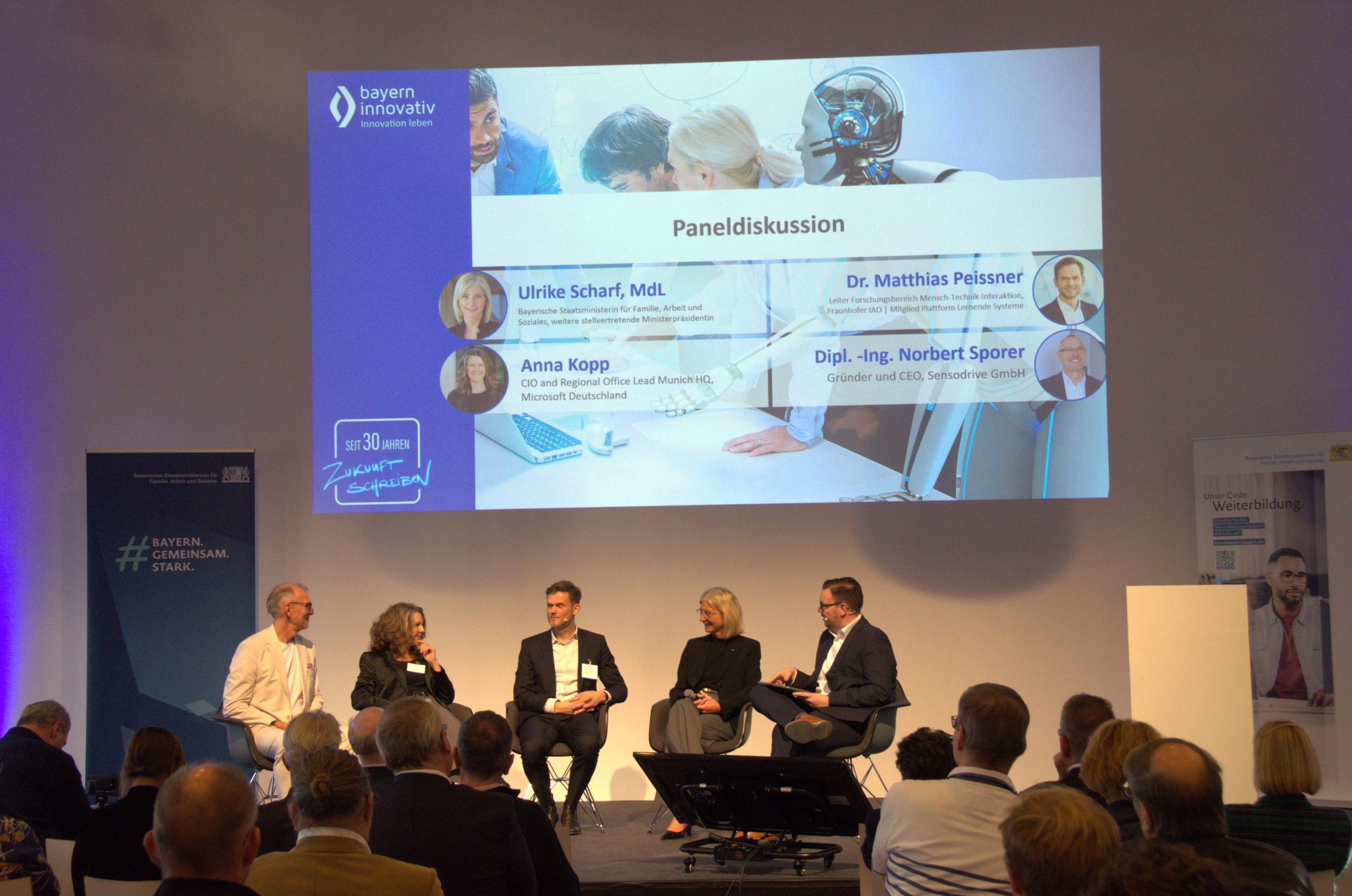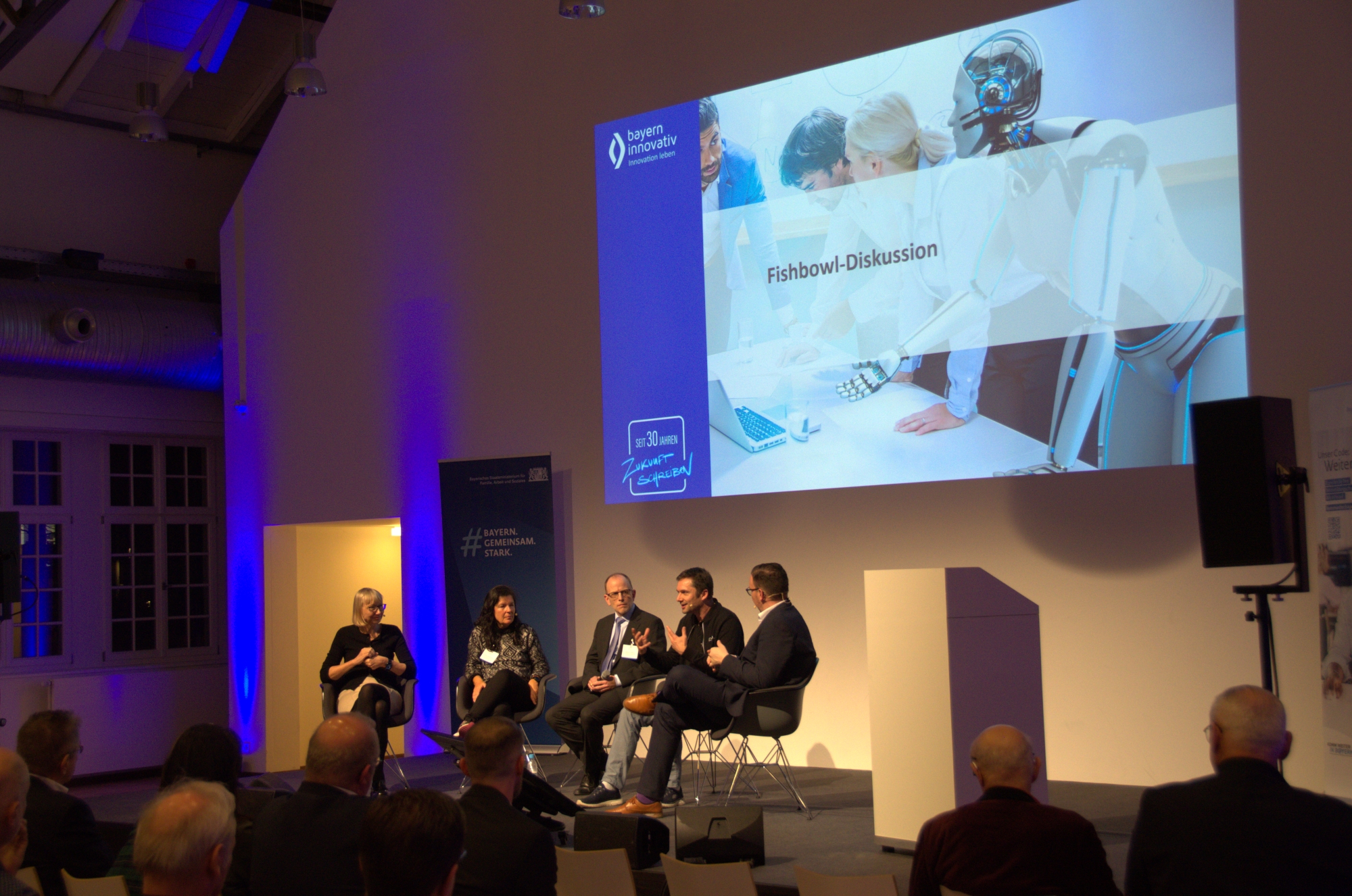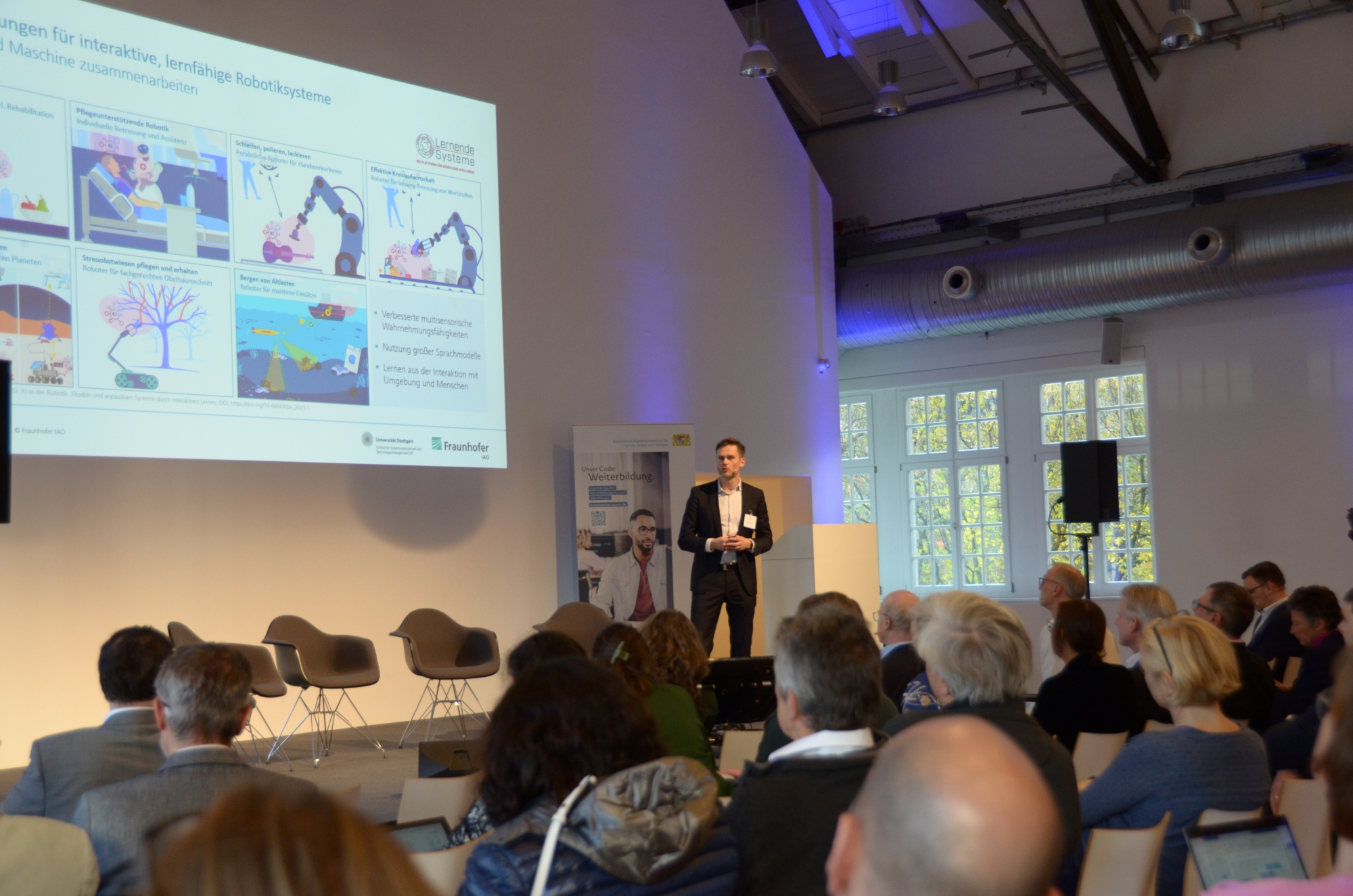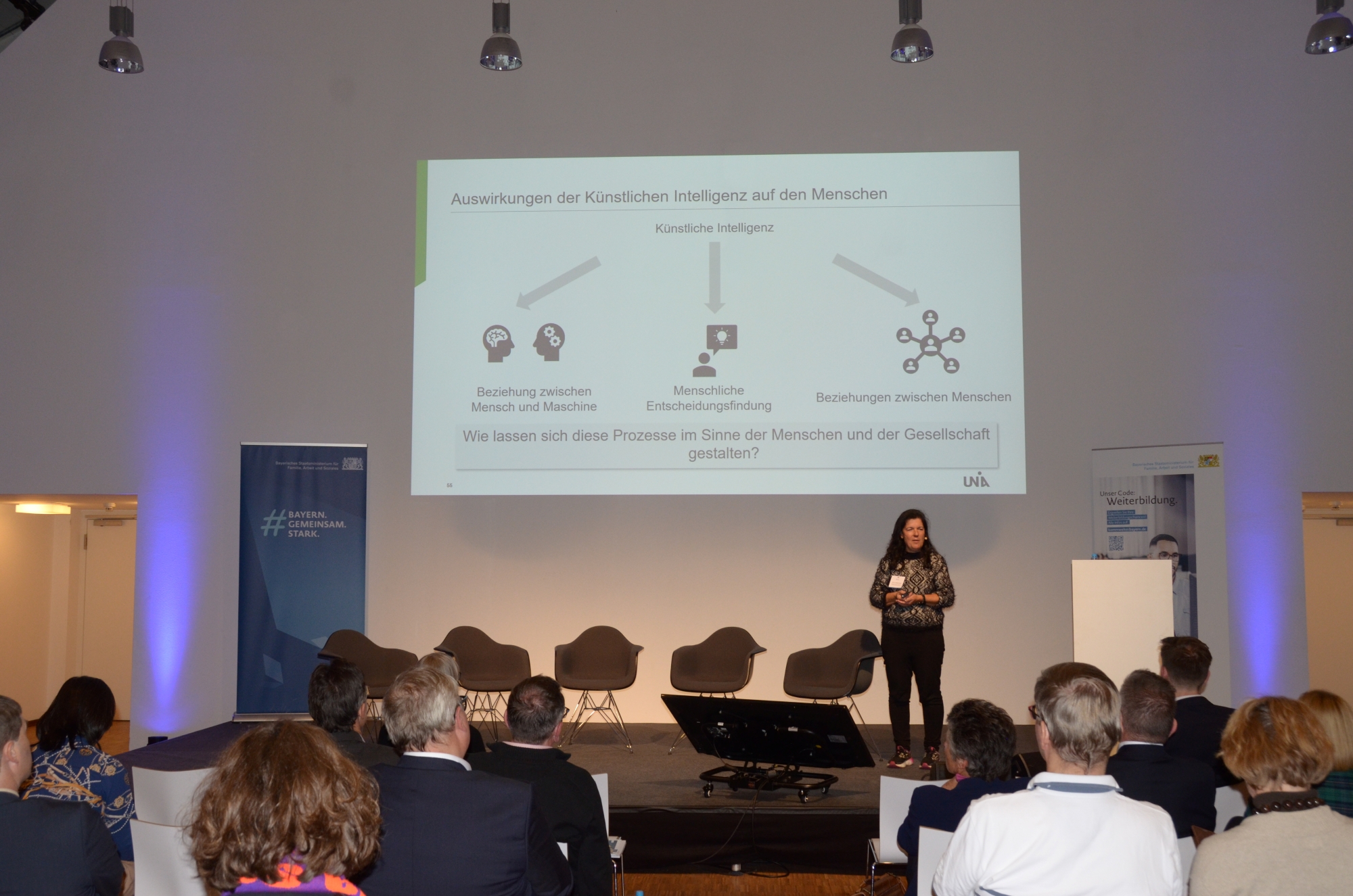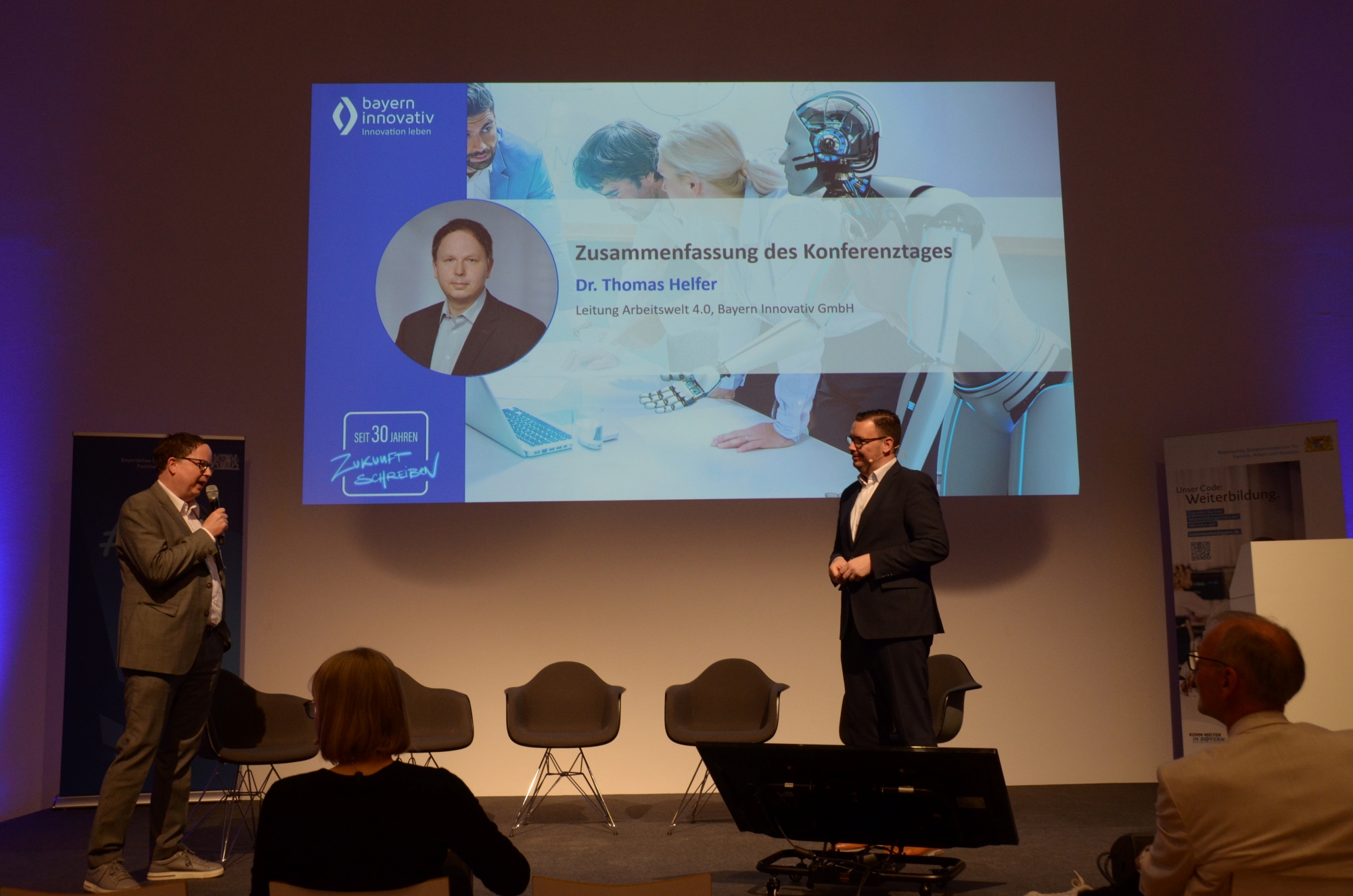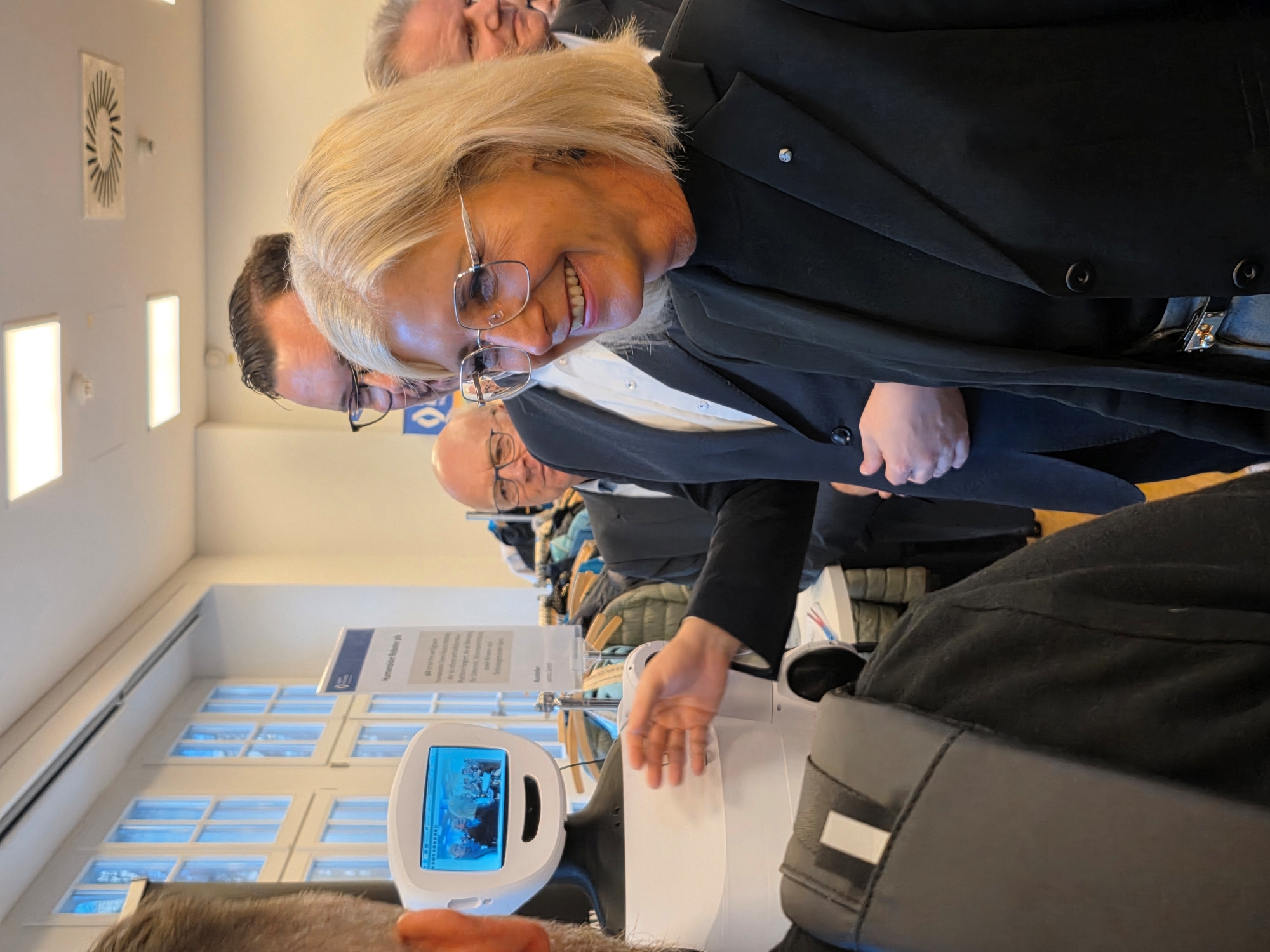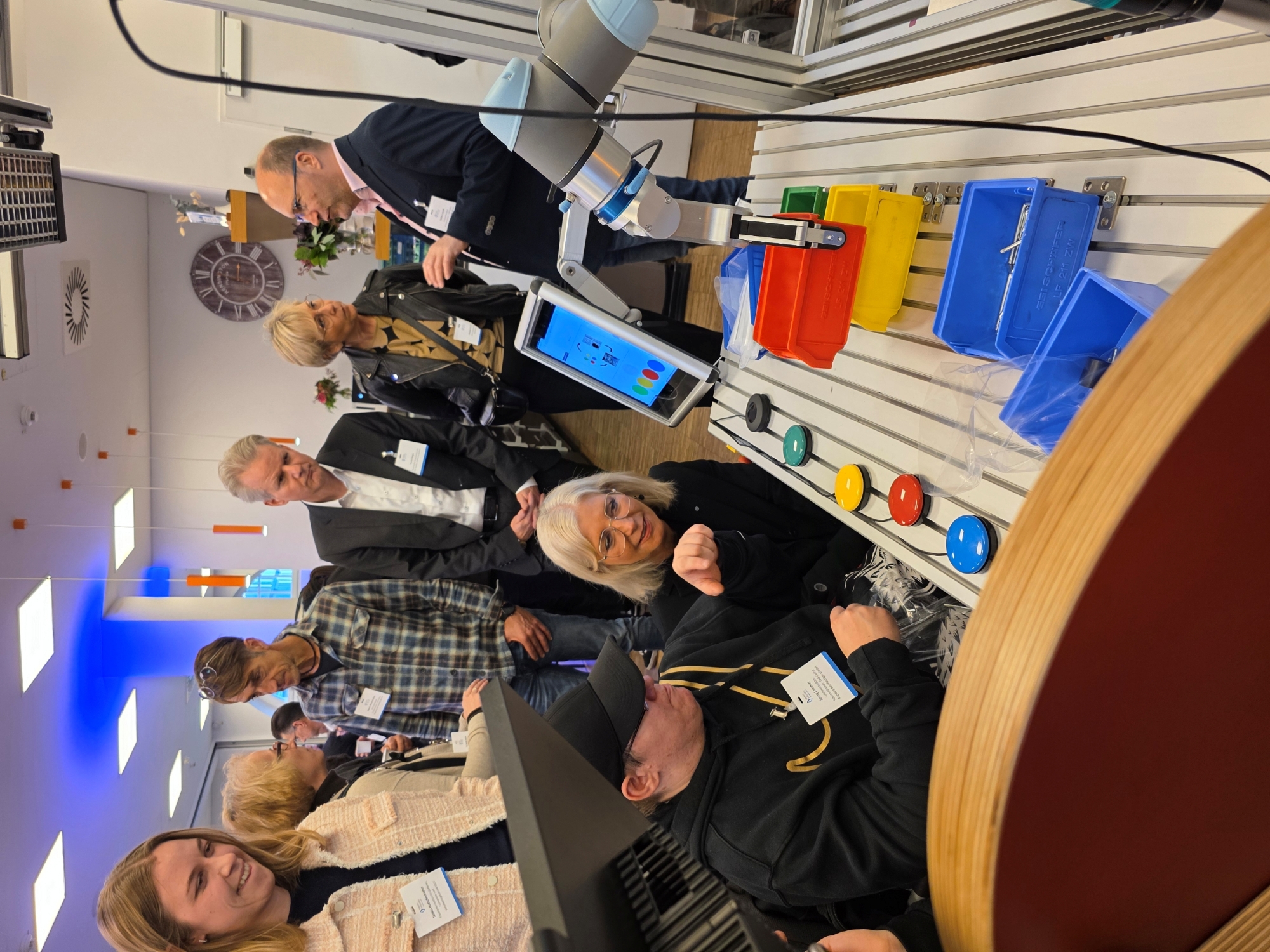Report on the seventh network conference
"Chatbots, humanoid robots & co. Human-machine interaction today and in the future"
On 30 October 2025, the seventh network conference of the Working World 4.0 thematic platform took place in the historic Gaszählerwerkstatt in Munich - sponsored by the Bavarian State Ministry of Family Affairs, Labour and Social Affairs and organized by Bayern Innovativ in cooperation with acatech - the German Academy of Science and Engineering. Under the motto "Chatbots, humanoid robots & Co. - human-machine interaction today and in the future", the focus was on one central question:
How can we create a working world in which humans and machines work together constructively, safely and sensibly?
The fully booked event brought together experts from science, business, politics and society - and made one thing clear: people must be at the center of all technological developments.
Ulrike Scharf, Bavaria's Minister for Family Affairs and Labor and other Deputy Minister-President, made it clear in her welcoming address:
"We need innovation with values - high-tech, but human and social. The digital transformation of the world of work through AI and robots creates innovations, opportunities and space for creative, new ideas and impulses. We shouldn't be afraid of artificial intelligence! Machines will not replace us - the humans - but should relieve us. What we need for this is the necessary specialist knowledge. With our pact for professional development and the wide range of offers, we support employees and companies in staying on the ball."
Keynote speech: Shaping the future of work with artificial intelligence and robotics
Dr. Matthias Peissner (Fraunhofer IAO) opened the conference with an inspiring keynote speech on the potential of AI and robotics. His core thesis was that AI and robotics open up enormous potential. Their value lies not only in the automation of human work, but also in the expansion of human capabilities. These technologies are the only way to push the boundaries of what is possible and promote sustainable growth.
He made it clear that AI can be seen as an additional team member when working together as a team. It can contribute ideas, analyze data and support processes - but the responsibility remains with humans. Studies show: The best results come from genuine human-machine collaboration. His conclusion: AI and robotics can help to meet the growing demand for skilled workers, increase productivity and make jobs more attractive - their aim is not to replace people, but to enhance their skills in a meaningful way.
Man and machine in a team
Prof. Dr. Elisabeth André (University of Augsburg) shed light on how AI is fundamentally changing our relationship with machines: We should be inspired by AI - not replaced by it. She vividly demonstrated that humans and AI complement each other: Sometimes humans recognize mistakes, sometimes AI does. It is crucial to know when you can trust AI - and when you can't.
She clearly formulated criteria for human-friendly AI: trustworthiness, protection of the individual, sensible division of labor and conducive working conditions.
Functional humanoid robotics
Robotics became tangible with the humanoid 3D printing robot pib. Dr. Jürgen Baier (isento GmbH) promoted a functional understanding of humanoid robotics: humanoid does not mean human-like, but human-friendly.
pib demonstrated live what an accessible, versatile and expandable robot that adapts to human working environments can look like.
isento's vision: humanoid robots as everyday tools and reliable partners.
Recognizing the limits of AI
Prof. Dr. Sabine Pfeiffer (FAU Erlangen-Nuremberg) raised awareness of the risks of generative AI: trust in AI requires specialist knowledge. She warned against adopting AI results without reflection - especially when it comes to highly specialized topics. Learning systems could even deteriorate if they learn from AI-generated data.
Her appeal: only critical thinking and experience make it possible to use AI responsibly.
Human-in-the-loop
Anna Kopp (Microsoft Germany) reminded the audience that humans must continuously correct, train and supervise AI: Only with human-in-the-loop will AI become a reliable support in everyday life.
Clever division of labor creates room for creativity, while routine tasks can be handed over efficiently.
Panel discussion: trust, participation and collaboration
In the lively discussion, it became clear that progress is collaborative work.
- Robotics and automation ensure prosperity, but at the same time, AI calls on us to leave our comfort zone.
- AI has the ability to accelerate good human work.
- Education and training opportunities must be promoted in order to reduce fears and encourage people.
- The less people know about AI, the greater the reservations.
- Cooperation, exchange and enthusiasm for new technologies are the key factors for anchoring innovation responsibly and successfully in companies. Successful human-AI teams are based on trust, clearly defined roles and sound specialist knowledge.
Exhibits: the future you can touch
Interactive stations showed how robotics, chatbots and assistive technologies are already being used today - from humanoid robots and intelligent assistance systems to adaptive dialog solutions. Participants were able to try out for themselves how intuitively modern systems react and how they facilitate work processes.
Key learnings from the network conference
- People remain at the center of all developments.
Technology must be geared towards human needs, not the other way around. - Future skills determine the quality of the transformation.
No responsible use of AI without further training, specialist knowledge and critical thinking. - Human-machine collaboration beats automation.
The best results come from teams of people and AI - with clear roles. - Trust requires transparency.
AI must remain comprehensible, safe and in need of correction. - Humanoid robotics is becoming suitable for everyday use.
Thanks to mechatronics, AI and 3D printing, robots are becoming versatile helpers. - Progress can only be made together.
Cooperation, exchange and participation are the key to human-centered innovation.
Conclusion: A strong vision for the working world of tomorrow
The seventh network conference sent out a clear signal:
It is characterized by trust, competence and responsible design. AI and humanoid robotics open up new freedoms - but they do not replace what is at the heart of work: human creativity, judgment and cooperation.
The discussions, impulses and exhibits encouraged us to actively shape the transformation - open to technology, willing to learn and humane.
